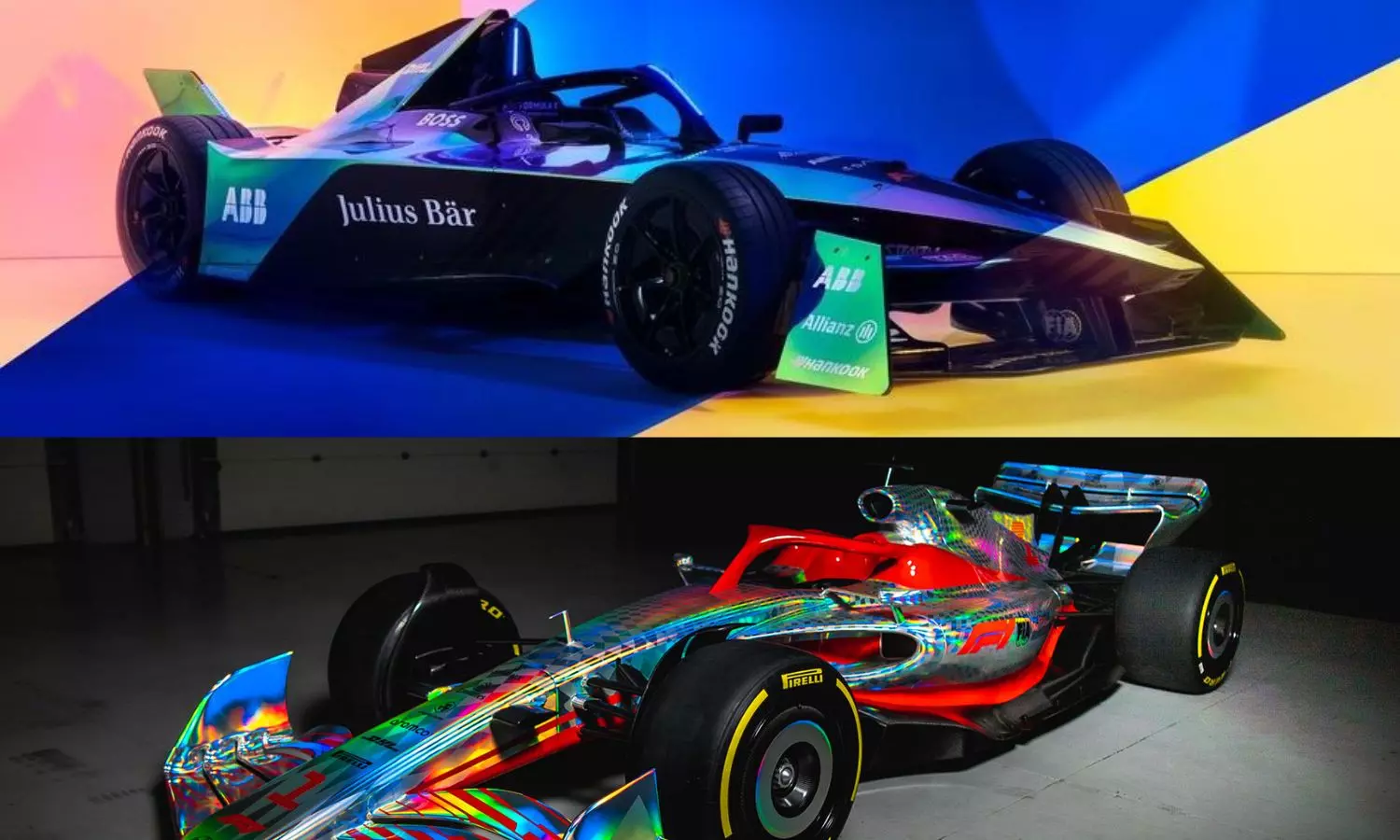Formula E
How different is Formula E from Formula 1?
There are some clear-cut differences between the two championships, namely Formula 1 and Formula E.

Formula E v/s Formula 1
The city of the Nizams, Hyderabad, is set to experience some high-octane motorsport action when Formula E makes its debut on 11th February, 2023. While the country houses many F1 enthusiasts, around 31 million of them, the comparatively newer concept of Formula E might still be evading them.
Many might be unaware of the vast differences that both championships have between them. Yes, both are racing competitions. Yes, both involve specially-engineered cars designed to achieve high speeds. But that's just the surface of it.
If one takes the effort to delve a bit deeper into both the disciplines, they are bound to find finer differences. To make the work easier for you, we delineate some of the major differences that set apart the more than 70-year-old F1 and the almost decade old FE.
DRS v/s Attack Mode
Drag Reduction System (DRS), as the name suggests, reduces the drag a Formula 1 car goes through in order to overtake the car in front, or simply get better lap time. The DRS can only be activated at certain outlined zones in the circuit during the qualification and the race.
In the world of Formula E, the Attack Mode is there to help provide the drivers with a boost worth of 50kW electric output. However, the current logistics of the same might hamper the racer's chances in the race.
To activate the mode, one has to go off the racing line into designated areas, going through which the the car's halo will turn blue, indicating to the driver that they can activate attack mode now.
While some time is wasted in doing this, the key is in strategising when to incorporate this boost in the driver's benefit.
A new technology named 'Attack Charge' is set to debut later in the ongoing season where the cars would be allowed a 30-second stop during the race to increase the output of the new Gen3 cars from 300kW to 350kW.
Qualifying format
For the longest time, F1 qualifying format has followed the traditional Q1, Q2, Q3 sessions which determine the grid order of the race. In Q1 and Q2, slowest drivers are eliminated while the others try to set their fastest laps. In the final session, the racers compete for the pole position on the grid.
In 2021, a new format called the 'Sprint Qualifying' was introduced to few of the races. Through it, the drivers have to race fewer laps and the grid position for the main race is determined on the driver's performance in the sprint session.
For Formula E, the qualifying format is a bit longer and could come across as confusing. In it, each team will be asked to assign one of their drivers to Group A and the other in Group B, where the groups will be determined via Drivers Championship standings.
In a layman's terms, the grid positions are determined via knockouts. Each group (the Group A having odd positions, Group B having even) will see 11 drivers get a 12-minute window to set lap times. The top four from each group advances into the quarter-finals, where duels take place.
Like this, the final will see the winner take the pole position, while the runner-up occupying second in the grid.
2022 F1 car v/s Gen3 FE model
While the main difference between the newest models of both championships is that the former uses hybrid engines while the latter electric, both have seen drastic changes and improvements as compared to their predecessors.
Currently, the cars being used by the F1 teams boast of larger, 18-inch wheels with winglets, a double-tunneled underfloor to create a ground-effect to increase downforce under the car, and modified front and rear wings. All of these have been made to direct the aerodynamics of the car from the wings to underneath the car to improve racing overall.
In Formula E, the cars in its Gen3 phase. As compared to its predecessors, these are made in such a way that top speeds of around 200mph are reached. Moreover, the Gen3 cars are lighter in weight and generate more output as compared to Gen1 and Gen2 ones.
